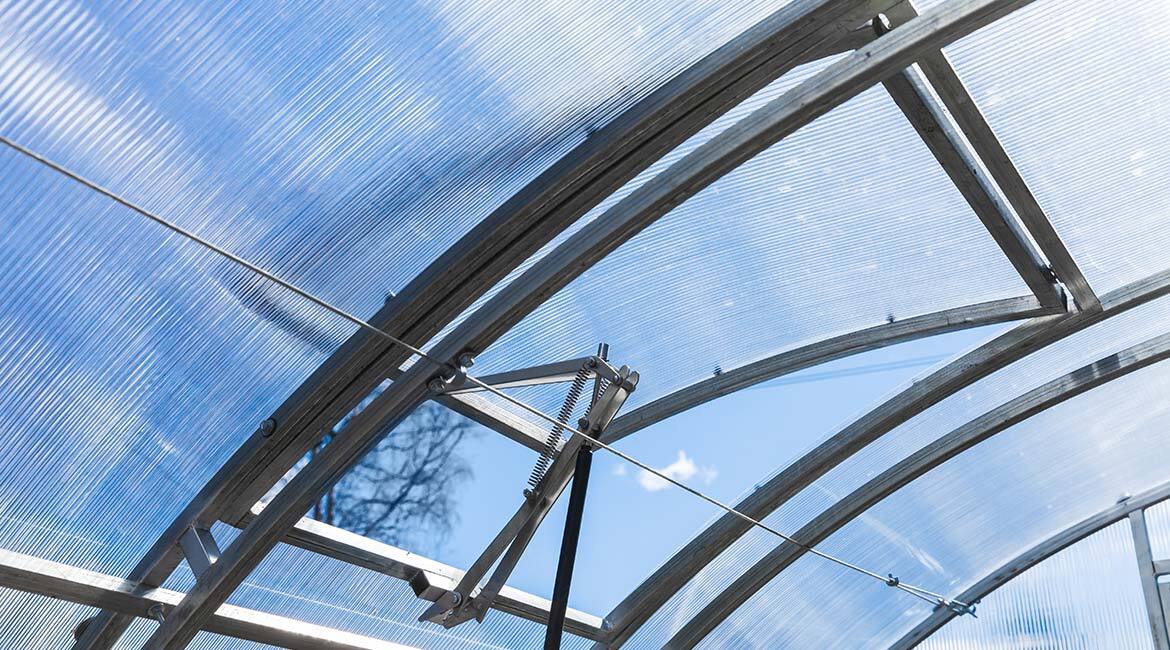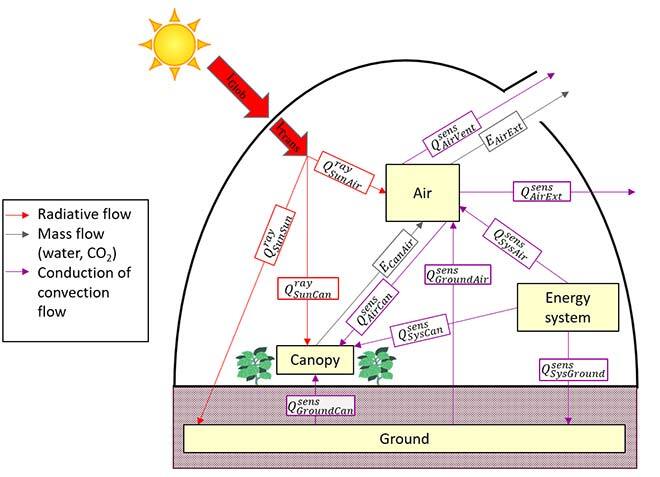Optimizing Greenhouses to Increase Quebec’s Food Autonomy

Purchased on Istockphoto.com. Copyright.
In November 2020, the government announced its intention to increase Quebec’s food autonomy by doubling the volume of food produced in greenhouses within five years. Currently, our province produces about half of what it eats. The goal is to increase this proportion from 51% to 56%.
To help eligible companies extend their production period, Quebec has allocated $91 million in the budget in addition to a preferential hydroelectric rate of 5.59 cents per kilowatt hour.
Numerous—but not Equivalent—Energy Efficiency Solutions
Most standard greenhouses are made of polycarbonate or double-walled polyethylene. They have little or no heating, and ventilation is done through vents. Their production period ranges from four to six months. Several actions can extend the production period, including:
- Designing better greenhouses—insulating the north wall and incorporating heat storage devices;
- Heating the greenhouses;
- Integrating technologies like lighting.

There is no one-size-fits-all solution. For each case, a multi-criteria analysis must be performed to produce the maximum number of crops while spending the least amount of money. The greenhouse gases they generate must also be considered, with special attention to energy efficiency, among other things.
Numerical Modeling of Greenhouses
To determine the influence of each option in increasing production, energy and mass balances must be carried out, taking into account the flows between different components inside the greenhouse (air, crops, soil, heating system…) and their interactions with the outside (sun, heat and exhaust air). In many cases, highly complex equations are used to simulate the contribution of each type of flow.

Solving all these equations, and for each time step, will be necessary to determine the impact of an intervention on production, costs and the environment and thus make the best decisions.
Example of Existing Applications
Here are two examples of projects carried out by the researchers of the Laboratory of Thermal and Building Science (LTSB).
Heating a greenhouse with waste heat from a data centre
Data centres need to dissipate large amounts of heat through dedicated cooling systems. We analyzed the possibility of recovering this energy (waste heat) to heat a greenhouse in the Baie-Comeau region, in Quebec.

Compared to a propane-fired unit heater, the proposed greenhouse would consume 66% less energy, reducing greenhouse gas emissions by 91%.
Northern Greenhouse Farming: a storage system coupled with solar energy
LTSB researchers are currently modelling a greenhouse in Kuujjuaq, Nunavik. This greenhouse has a thermal storage system designed by the team that regulates the temperature well. However, in order to extend the growing season, they are exploring the possibility of adding a solar heating system. These simulations will help assess the profitability of this option before committing to the significant costs of such an installation.
Conclusion
If we want to increase the productivity of our greenhouses, we cannot propose haphazard interventions. To help stakeholder, numerical models are required to evaluate the different options available to us to choose the appropriate interventions for each greenhouse and thus contribute to increase the production efficiency and so our food autonomy.



